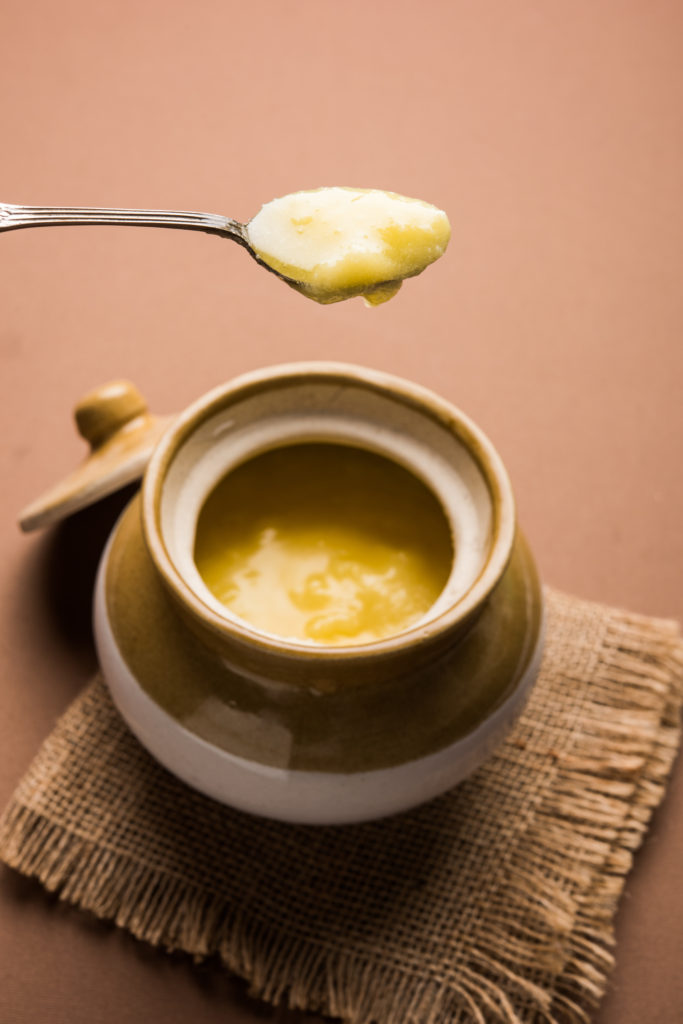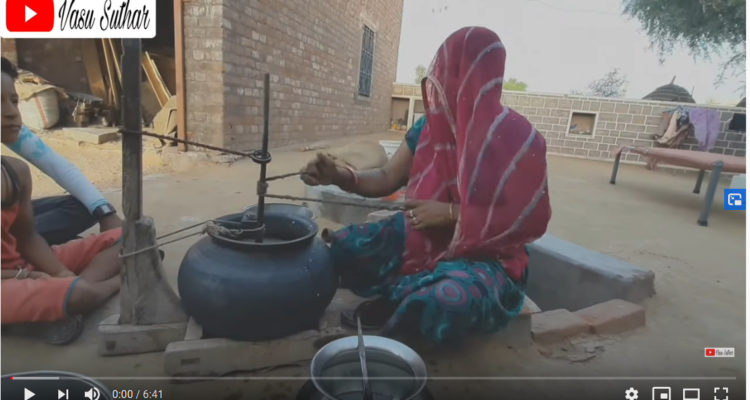Desi bilona ghee, made with the traditional hand-churning device called ‘bilona’, packs double the nutrition than machine-produced industrial ghee.
◊ By Shivranjani Gupta
Visit ORGANIC SHOP by Pure & Eco India
One of the later entries into the ‘superfood’ bucket of the Western world, ghee, has always been held up as a rich source of nutrients by Indians.
GHEE, AN AGE-OLD STAPLE OF INDIAN HOMES
Much before the use of regular cooking oils began, ghee was consumed in Indian homes in alignment with the Ayurvedic tradition. Along with its smooth buttery taste and consistency, it has countless special uses and benefits. Be it a simple roti or an exquisite halwa, nothing elevates an Indian meal like a spoonful of ghee.
Today, ghee is a thriving industry in India. In 2019, its value stood at a whopping INR 2,273 billion. In order to fulfil this massive demand across the country, commercial ghee producers have replaced traditional, slower methods of manufacturing, to more economical industrial processes.
FACT:
Just 1 litre of hand-churned bilona ghee requires 30 litres of milk.
HOW MUCH MILK GOES INTO 1 LITRE OF BILONA GHEE?
Just 1 litre of hand-churned ghee requires 30 litres of Gir cow’s A2 milk. Hand-churning, as you may imagine, is a slow, tedious process.
In stark contrast, 1 litre of industrial ghee produced through mechanisation and obtained from buffalo’s milk, requires only 15 litres of milk—half of what is required in the bilona process.
Naturally, this also halves the nutritional content.
Not to mention, A2 milk in itself is superior to other milk.

Hand-churned ghee is not only double the nutrition of industrial ghee, but also, it is a labour of love and patience, owing to the manual labour and time it demands. But worth it, it is!
BILONA GHEE METHOD
To make pure ghee with the bilona process, butter is churned out of whole curds made from cow milk.
This butter is then heated until all the water content has evaporated and only the fat content remains, which is the ghee. The churning process is executed by using wooden churners (bilona).
For the heating process, cow dung is the most beneficial fuel. Bilona is either hand-churned or churned via a motor. As a result, this ghee retains more vitamins and nutrients owing to its low-heat preparation.
It has a smooth, creamy texture and rich, nutty flavour, and is a versatile pantry staple that can replace butter, vegetable oils, olive oil and coconut oil.
In the machine-based process, raw milk is spun at high speeds by an industrial motor until the fat separates, which is heated until ghee is formed.
This industrial process allows ghee manufacturers to minimise costs and obtain mass scale, but as a result of this standardisation, the layered, complex notes of our ghar ki desi ghee are lost.
ABOUT THE AUTHOR
The author is General Manager, Conscious Food, an Indian organic food company, which also offers Gir cow A2 ghee prepared with the legacy hand-churned bilona method.



can you plz briefly explain about this method in call 9566771717